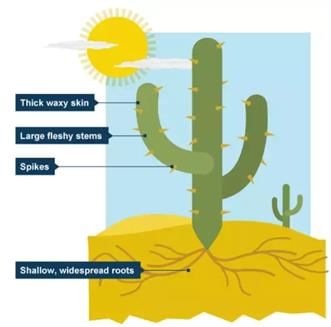Adaptations in Plants Class 4 Notes Science
| Table of contents |

|
| Why Do Plants Need to Adapt? |

|
| Water or Aquatic Plants |

|
| Land or Terrestrial Plants |

|
| Important Tips |

|
Why Do Plants Need to Adapt?
Plants need to adapt in order to survive harsh climatic conditions and other unfavourable circumstances.
 Roses use thorns to scare off animals who intend to eat them up, which is a kind of Adaptation.
Roses use thorns to scare off animals who intend to eat them up, which is a kind of Adaptation.
- Plants grow in different places. They can be found in dry and sandy deserts, damp and wet plains, hilly areas, valleys, snow-covered high mountains, and even underwater.
- Habitat: The place where an organism usually lives and grows in nature is called its habitat. A habitat contains everything that an organism needs. A habitat can be as small as a patch of a garden or as big as a forest.
- Adaptations: Sometimes plants find it difficult to live in a climate and they have to adapt or change in order to survive in their habitat. Adaptations are the special features that help a plant to survive in its habitat.
 Leaves of Desert Plants have adapted to the Desert
Leaves of Desert Plants have adapted to the Desert
Depending on the habitat they live in, plants can be divided into two major groups:
- Water or aquatic plants
- Land or terrestrial plants
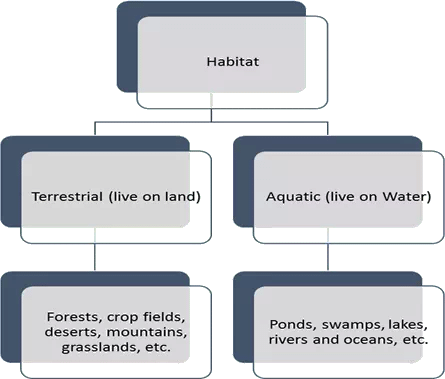
Water or Aquatic Plants
The plants that grow in water are called aquatic plants.
- Water covers about 71% of the Earth’s surface, and so aquatic habitats occupy a greater area than terrestrial ones.
- Aquatic plants may grow in saltwater (oceans, seas) or freshwater (lakes, ponds, rivers, and streams).
- There are three types of aquatic plants - floating, fixed, and underwater.

1. Floating Plants
- Floating plants like duckweed, Wolffia, Pistia, and water hyacinth are light and spongy. Similar to a sponge, these plants have lots of empty spaces filled with air. This makes these plants very light.
 Duckweed Plants
Duckweed Plants
- Thus, the plants are able to float on the surface of water.
- The upper surface of the leaves is usually waxy to repel water.
- The roots of these plants are not fixed. The roots hang loosely in the water.
2. Fixed Plants
- Fixed plants have roots fixed to the bottom of the water body such as a pond. They have long stems to reach the surface of the water.
 Water lilies bloom in the water. The plant's leaves float on top of the water.
Water lilies bloom in the water. The plant's leaves float on top of the water.
- They have broad leaves that float on water. The leaves also have a waxy coating that helps the leaves to stay dry and prevent rotting.
- Stomata are present on the upper surface of the leaves.
- They have thin, hollow, flexible, and light stems which help the leaves to float. They also bend with the flow of water, thereby preventing damage by the strong water current.
- Lotus and water lily are some examples of fixed plants.
3. Underwater Plants
- Underwater plants are fixed to the bottom of the water body and remain fully underwater.
- Stomata are absent in leaves. Carbon dioxide comes out of the leaves through the surface.
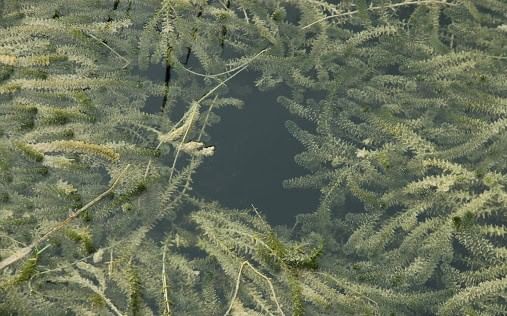 Hydrilla: Underwater Plants
Hydrilla: Underwater Plants
- Underwater plants prepare food using the sunlight that filters through the water.
- Underwater plants support animal life to a great extent because they give out oxygen during photosynthesis, which keeps the aquatic animals alive.
- Underwater plants like the Hydrilla have thin, narrow leaves that let water pass between them. They do not get torn due to the movement of water. The Vallisneria has ribbon-like leaves that can bend with the flow of water.
- Pondweed, eelgrass, and water star grass are some examples of underwater plants.
 Aquatic Plants
Aquatic Plants
Land or Terrestrial Plants
All plants that grow on land are called terrestrial plants or land plants.
There are different kinds of land areas. Plants growing in each of these areas need to adjust to the kind of weather, amount of rainfall, type of soil, and other such factors found in that place.
1. Plants in the Plains
- Some plants grow in the plains where the climate is hot in summer and cold in winter.
- Plants growing in plains have more space to spread out so they have several branches.
- They have flat leaves. These help water to evaporate and keep the tree cool when the climate gets hot. Flat leaves also help to trap a lot of sunlight.
- Mango, banyan, neem, peepal, mulberry, poplar, and Sheesham are some trees that grow in plains.
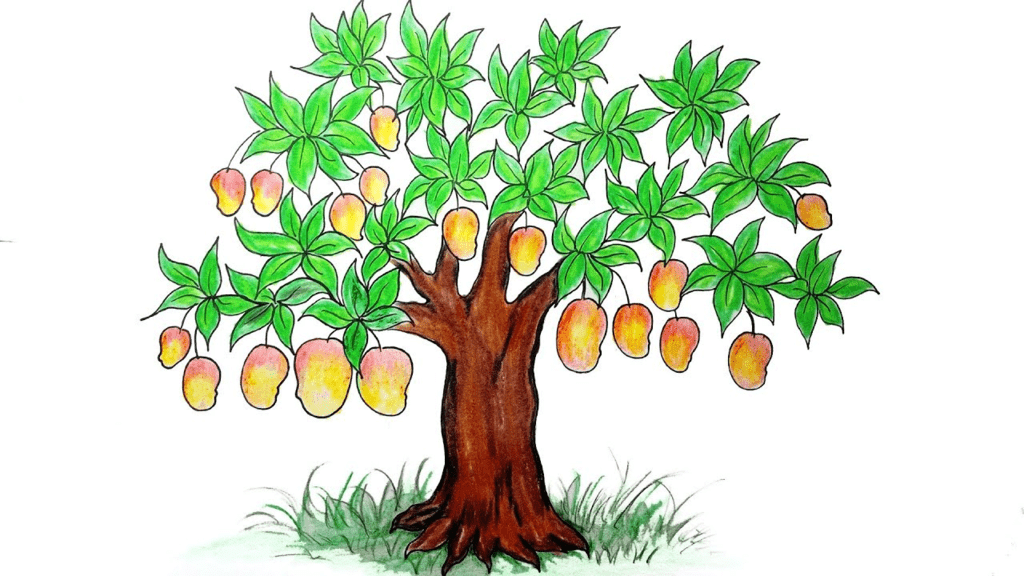 Mango Tree
Mango Tree
- Some of these trees lose all their leaves at once generally during autumn in order to survive harsh weather conditions. As spring approaches, new leaves start growing. Such trees are called deciduous trees. Examples: cherry, maple tree, teak, and beech tree.
- Trees that do not lose their leaves at once are called evergreen trees. Examples: jack fruit tree, eucalyptus, and pine.
2. Plants in Deserts
- Deserts are dry and very hot places. There is a scarcity of rainfall and a lot of direct sunlight falls on the plants.
- The soil in the desert is sandy and unable to hold much water. Cactus (Plural: cacti) and saguaro are some examples of desert plants.
 Cactus Plants
Cactus Plants
Some adaptations in desert plants are:
- Plants store water in their stems or leaves.
- Long root systems in desert plants go deep into the ground to absorb water.
- Most plants are leafless. The lack of leaves helps reduce water loss.
- In the cactus, leaves are reduced to spines. Prickly spines discourage animals from eating plants for water. Waxy coating on stems and leaves help reduce water loss. Stem is green, thick, and filled with water. Photosynthesis is carried out in stem.
3. Plants in Mountains
Plants on mountains and hills are adapted to grow in very cold temperatures.
- Most plants are tall and straight. They are cone-shaped, so that snow falls off easily from their surface.
- Most plants have needle-like leaves. The needle shape prevents too much water loss and helps shed snow easily.
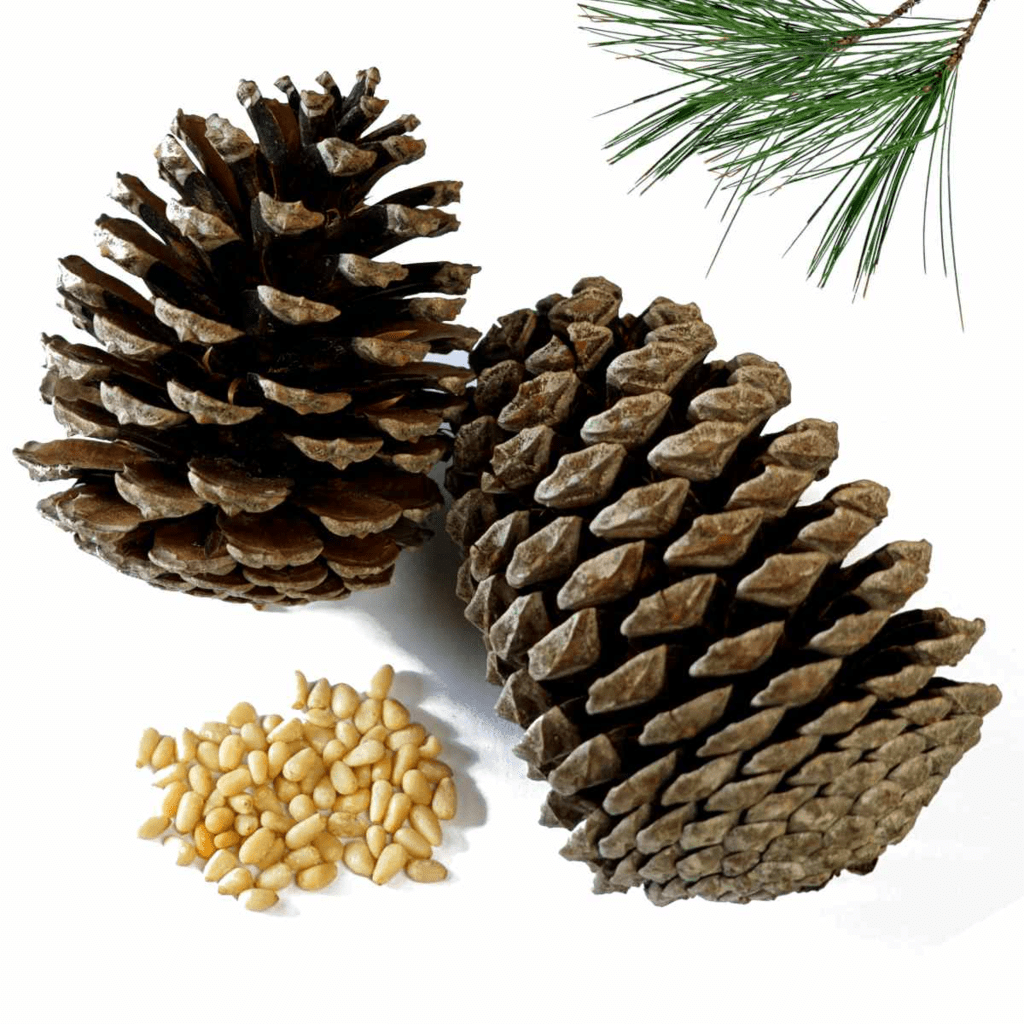 Pines
Pines
- Waxy coatings on the leaves prevent evaporation and loss of water. The dark colour of the leaves allows more solar heat to be absorbed. Many trees have branches that droop downward to help shed excess snow to keep the branches from breaking.
These trees do not bear flowers but have seeds in cones. They are called conifers or coniferous trees. For example, pine, fir, deodar, and spruce.
4. Plants in Heavy-rainfall Areas
- In areas with heavy rainfall, evergreen trees are found. They have plenty of sunlight and water throughout the year.
- The broad and abundant leaves capture sunlight for photosynthesis.
- Lychee, cashew, pineapple, sugar cane, cotton, rubber, and teak grow well in these areas.
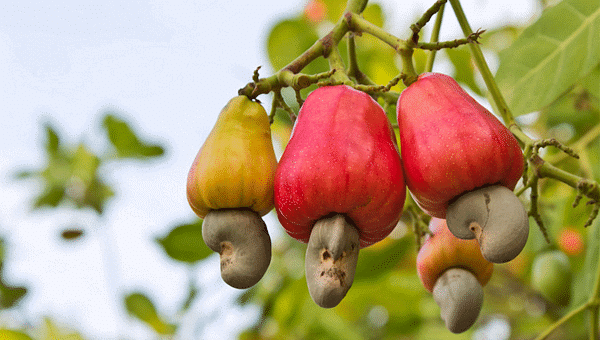 Cashew Plant
Cashew Plant
5. Plants along the Sea Coast
- Trees in the coastal areas are well-adapted to grow in sandy soil, salty water, and high rainfall.
- They have strong stems that can withstand strong winds.
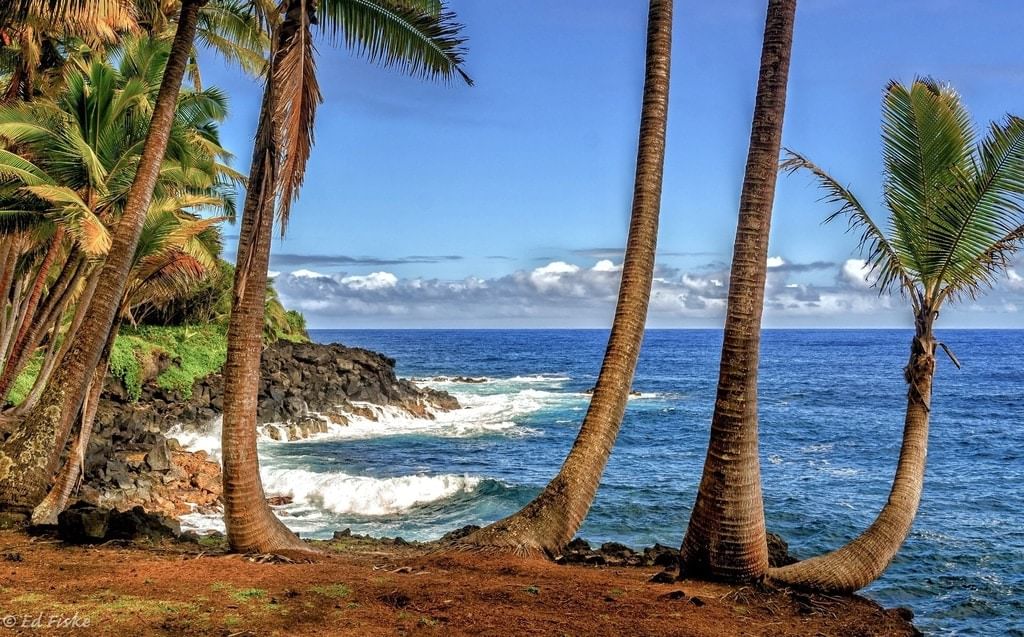 Palm Trees along the Sea Coast
Palm Trees along the Sea Coast
- They have long roots that grow deep into the sandy soil. These roots also firmly anchor the plant.
- Coconut and palm trees grow well in these areas.
6. Plants in Marshy or Swampy Areas
- Marshy areas have sticky and clayey soil. It is difficult for plants to grow in such areas as air cannot reach the roots.
- Thus, roots of these plants grow out of the soil to breathe from the air. Such roots are called breathing roots.
- Trees growing in marshy areas are called mangroves, for example, Rhizophora, Avicennia.
 Mangroves
Mangroves
Important Tips
- We know that paper is made from plants. So, we should not waste paper and reuse it whenever possible. We should always use both sides of the paper.
- Whenever you go out to play in a park, do not pluck leaves and flowers. Stop others also if they are doing so. The leaves of many plants are home to insects, birds and small animals.
- Plant small herbs and shrubs around your home. These plants will give us fresh air to breathe.

Scientist in Focus
Charles Darwin (1809–1882),
an English Scientist wrote the book on the Origin of Species. Darwin claimed that all plants and animals had developed or evolved from earlier forms of life. Darwin was born on February 12, 1809 into a wealthy and well-known family. He was a very excellent student in school and was always interested in nature.
Charles Darwin
|
53 videos|44 docs|59 tests
|
FAQs on Adaptations in Plants Class 4 Notes Science
| 1. Why do water or aquatic plants need to adapt? |  |
| 2. How do land or terrestrial plants adapt to their environment? |  |
| 3. What are some common adaptations in plants? |  |
| 4. How do plants adapt to different climates? |  |
| 5. Can plants adapt to human-induced changes in the environment? |  |

|
Explore Courses for Class 4 exam
|

|

